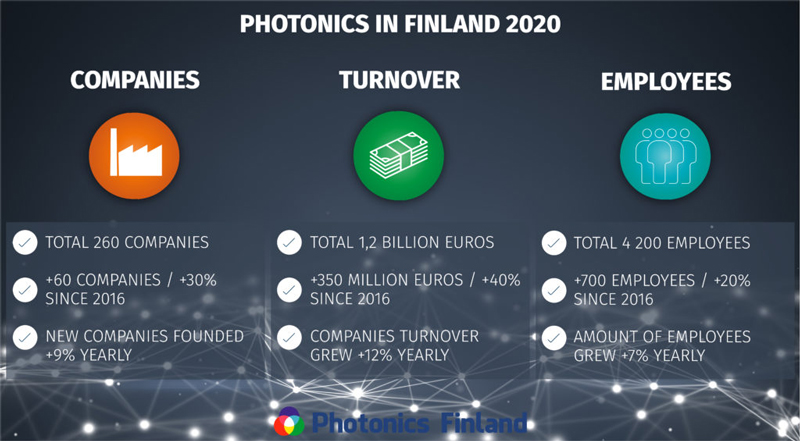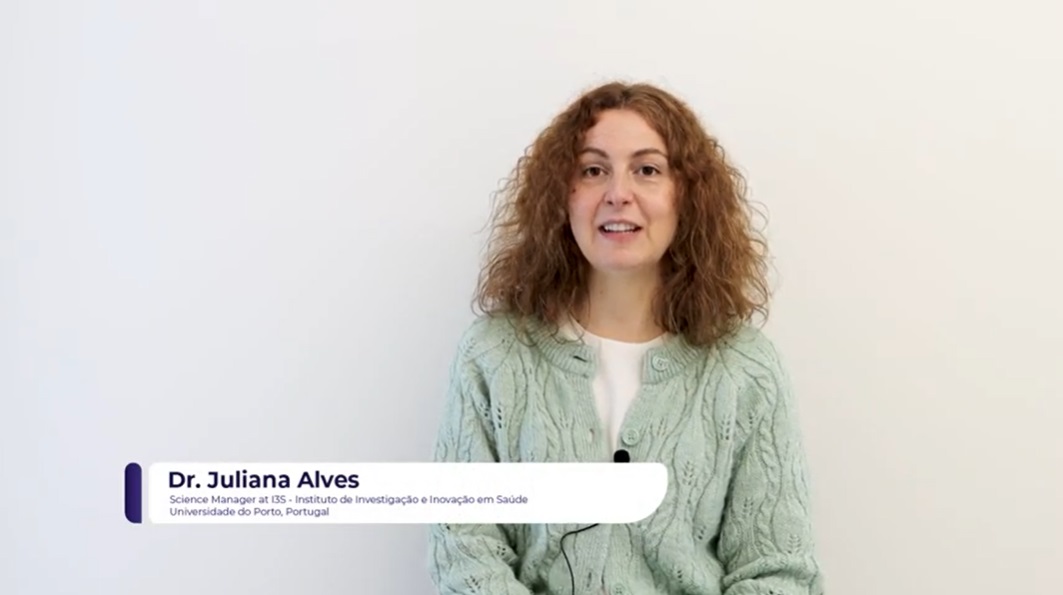This spring Photonics Finland has carried out a business survey to analyse the Photonics industry in Finland.
Responses of more than 165 companies were analysed and the results show that the development since 2016, when the last survey took place, has been better than anticipated.

Photonics in Finland – summary of the survey conducted in 2020
The Photonics Industry in Finland employs today 4200 highly trained people and has an annual turnover exceeding 1.2 billion euro with about 260 companies acting in the field. Since 2016 we are seeing a 20% increase in the number of employees, 30% increase in the number of Photonics companies and a 40% growth in turnover. Most photonics companies (62%) are relatively small enterprises employing from 10 to 15 people with less than 5 million euro turnover.
For Finnish Photonics companies Industrial Manufacturing continues to occupy most of the market with 22%, followed by Life science and Health with 16%. By far the biggest photonics output is in manufacture of optical components, systems, and instruments at 60%.
Despite the ongoing coronavirus crisis, Finnish photonics companies reported high growth expectations for the next 3 years. Companies expect their key target markets to grow annually 29%, photonics related turnover to grow annually 38% and their number of employees to grow annually 31,2%.
To facilitate this growth companies expressed the need for support in activities that will increase finding of new foreign and domestic partners, help in search for talented human resources and continue and further improve co-operation with universities and research institutions. Photonics Finland continues to be the single point of contact for the Finnish Photonics ecosystem that provides the platform to enable all those activities. In particular, the MIRACLE project is an excellent example of activities that support those needs of the Photonics ecosystem.
The MIRACLE project is a joint effort of a team composed of 14 participant organisations from 6European countries. Five participants are Higher Education Institutions, two are Hospitals, four are Small-Medium Enterprises (SME) and three are Non-Profit Organizations. Partners complement each other by contributing their specialities for concrete component in the MIRACLE system. The consortium is soon completing the development of a new and effective arthroscopy MIR-ATR imaging probe that is aimed to reach technology readiness level 6-7 during the project. The consortium will consolidate a strong business case for the developed system driven by the SMEs and by the needs of orthopaedic surgeons and patients.
Feature image author – @jcomp


